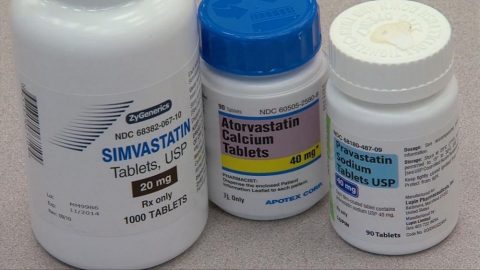The Drug Discovery For Neurodegeneration Conference was held in Washing DC February 2-3d 2009. The conference was presented by the Alzheimer’s Drug Discovery Foundation,* with the mission to “rapidly accelerate the discovery and development of drugs to prevent, treat, and cure Alzheimer’s disease and related dementias of cognitive aging.”
This was their 3d annual conference and had support from the National Institutes of Health (NIH) and the pharmaceutical industry. What follows are some of the highlights from this conference with insight into the current directions for diseases affecting the central nervous system (CNS). Although this organization has a focus on Alzheimer’s disease, other CNS related diseases such as Parkinson’s, Huntington’s, Amyotrophic Lateral Sclerosis, and Progressive Multiple Sclerosis were also discussed.
Opening Remarks…
The Executive Director of the Alzheimer’s Drug Discovery Foundation, a Dr. Howard Fillet, started the conference with some sobering remarks regarding the huge hurtles that exist to simply get effective drugs to market. He pointed to the fact that 90% of researchers work on drugs that never come to market. Out of 10 drugs that do get to market, 3 of those actually get used in a clinical setting, and of those three, only one will be profitable! Despite the increases in RnD by big pharma in the past few years, actual approvals have gone down, with Dr. Fillet stating “pharma has failed to deliver.” If that were not sobering enough, according to Dr. Fillet, success rates for drugs attempting to treat diseases affecting the CNS is lower then for any major illness. Obviously that’s not good news for those who are currently suffering, or will be suffering, from these diseases in the near future.
Dr. Fillet did however bring the mood of the conference back up a few notches by explaining that the model by how the pharmaceutical industry pursues new drug development is going through substantial changes; seeking more partnerships and new ideas from outside sources such as Universities, smaller companies, and others. He stated big pharma has realized many of its limitations and is aggressively seeking to increase the rate at which they transfer concepts to actual clinical use and they realize success requires a large team collaborating from different sectors from a wide range of disciplines. That’s the good news, and it appears things are slowly but surly changing for the better.
Research of Interest
As most people know, the brain is surrounded by a semi permeable barrier known as the Blood Brain Barrier (BBB) which selectively allows molecules in and out (more of that later) to interact with the brain. That’s an ultra simple description of what’s very complex system, but that’s essentially the BBB in a nut-shell. A major challenge for any drug attempting to impact the CNS is getting the drug past the BBB. A Dr. Martin Watterson from Northeastern University started the days session off discussing the difficulties of drug development as it related to the BBB. He estimated approximately 90% of drugs currently directed at the CNS for the diseases mentioned above don’t have adequate BBB penetration, which of course greatly reduced their effectiveness and increases their potential for side effects.
Dr. Watterson briefly outlined what’s an area of intense investigation right now looking at what’s called “penetrants” to improve the efficacy of drugs designed to impact the CNS. The Penetrants involve a variety of technologies to improve drug efficacy by getting it past the BBB. Various technologies were discussed and these technologies should be improving the efficacy while reducing the side effect profile of many drugs both in use and currently in development.
A Dr. Alan Kozikowski from the University of Illinois discussed what are known as Histone deacetylase (HDAC) inhibitors which have shown real promise as anti cancer compounds which may also have uses in diseases effecting the CNS. The specifics of HDAC inhibitors is beyond the scope of this article, but the basic concept is they are selective inhibitors of various zinc dependent enzymes, some of which play essential roles in gene activation and or inhibition. These “epi genetic enzymes” are essential to a vast amount of human biology. The term “selective” is key here. Zinc and the many zinc dependent enzymes are required for literally hundreds of functions essential to human health, thus simply blocking zinc or these enzymes would mean certain death to the patient. However, some highly selective HDAC inhibitors have been found to improve memory and reduce oxidative stress in animal models. It appears they can activate protective mechanisms in neuronal tissues in the brain. These compounds are currently be researched for possible clinical applications in diseases such as Alzheimer’s and other diseases of the CNS.
One of the most interesting and promising lectures was given by a Dr. Richard Silverman from Northwester University regarding Nitric Oxide (NO) and it’s possible role in diseases of the CNS. Unless one has been living in a cave for the past few years, NO is a familiar term. NO is a ubiquitous biological messenger that is involved in countless functions in the human body. Because NO is so ubiquitous within human physiology, it can be found in both health promoting and health degrading processes. The enzyme Nitric Oxide Synthase (NOS) catalyzes the conversion of the amino acid arginine to NO. However, there are three versions of this enzyme (isozymes) that act on different tissues. The one most people are probably familiar with – due to the fact it’s responsible for smooth muscle regulation and blood pressure, is the endothelial isozyme – which is called eNOS. The second form of the enzyme is called nNOS, which effects neuronal tissues and is important for neurotransmission. Finally, the third version of the enzyme is called iNOS and which acts as a cytotoxic agent during normal immune responses. It’s the second version of this enzyme (nNOS) that appears to play an important role in diseases such as Alzheimer’s, Huntington’s, Parkinson’s, and others. An over production of NO via nNOS is pathologically elevated in these diseases as well as during strokes, migraine headaches, and cerebral palsy. Similar to the discussion above regarding zinc and the zinc dependent enzymes, one can’t simply block the NOS enzymes as NO is too important for human health. However, a selective nNOS inhibitor would allow reduced levels of NO in the brain without negatively impacting the rest of the body where NO is essential for survival and health.
Dr. Silverman and his lab have been developing selective inhibitors of the nNOS enzyme with promising results in animal models. If such drugs are effective in humans, it would be a real breakthrough treatment for a variety of pathologies where an over production of NO in the brain leads to tissue damage of the CNS.
Dr. Frank Longo from Stanford University presented his finding on another area of research regarding what’s called the p75 neurotropin receptor (p75NTR). This receptor is up- regulated in Alzheimer’s disease. Dr. Longo’s lab has developed a drug that is given orally and gets passed the BBB which interacts with this receptor. The drug is a ligand to this receptor (a molecule that fits/interacts with a receptor) which appears to up-regulate the neurons natural survival mechanisms vs. “death mechanisms.” This is of course a highly shortened and simplified explanation, but LEF readers should get the basic idea. Regardless, this drug has been shown to be highly neuro-protective and could be beneficial in various CNS diseases, spinal cord injuries, and age related neuron shrinkage.
Conclusion
The above is just a small sample of exciting research taking place that could lead to truly effective treatments for Alzheimer’s disease as well as other affecting the CNS. Some of this research could also have impact on treating brain trauma and or other parts of the CNS, such as spinal cord injuries. If I were to summarize one impression I came away with from this conference, it’s that researchers appear to be looking at drugs that target or up-regulate the brains existing protective mechanisms vs. looking for a magic bullet molecule. It appears they are learning that within our body exists the answers to heal, and drugs that can encourage those pathways/mechanisms will yield the greatest benefits.
* = for more information on this organization go to their web site at www.alzdiscovery.org
Will Brink is the owner of the Brinkzone Blog. Will has over 30 years experience as a respected author, columnist and consultant, to the supplement, fitness, bodybuilding, and weight loss industry and has been extensively published. Will graduated from Harvard University with a concentration in the natural sciences, and is a consultant to major supplement, dairy, and pharmaceutical companies.
His often ground breaking articles can be found in publications such as Lets Live, Muscle Media 2000, MuscleMag International, The Life Extension Magazine, Muscle n Fitness, Inside Karate, Exercise For Men Only, Body International, Power, Oxygen, Penthouse, Women’s World and The Townsend Letter For Doctors.
He’s also been published in peer reviewed journals.
Will is the author of the popular e-books, both accompanied by private members forum access , Bodybuilding Revealed & Fat Loss Revealed.
You can also buy Will’s other books on Amazon, Apple iBook, and Barnes and Noble.







I’ve read over many of your current entries and I had been curious about if you wanted to swap webpage links? I am continually hunting to switch links with blogs about related subjects! I look forward to hearing back from you soon.